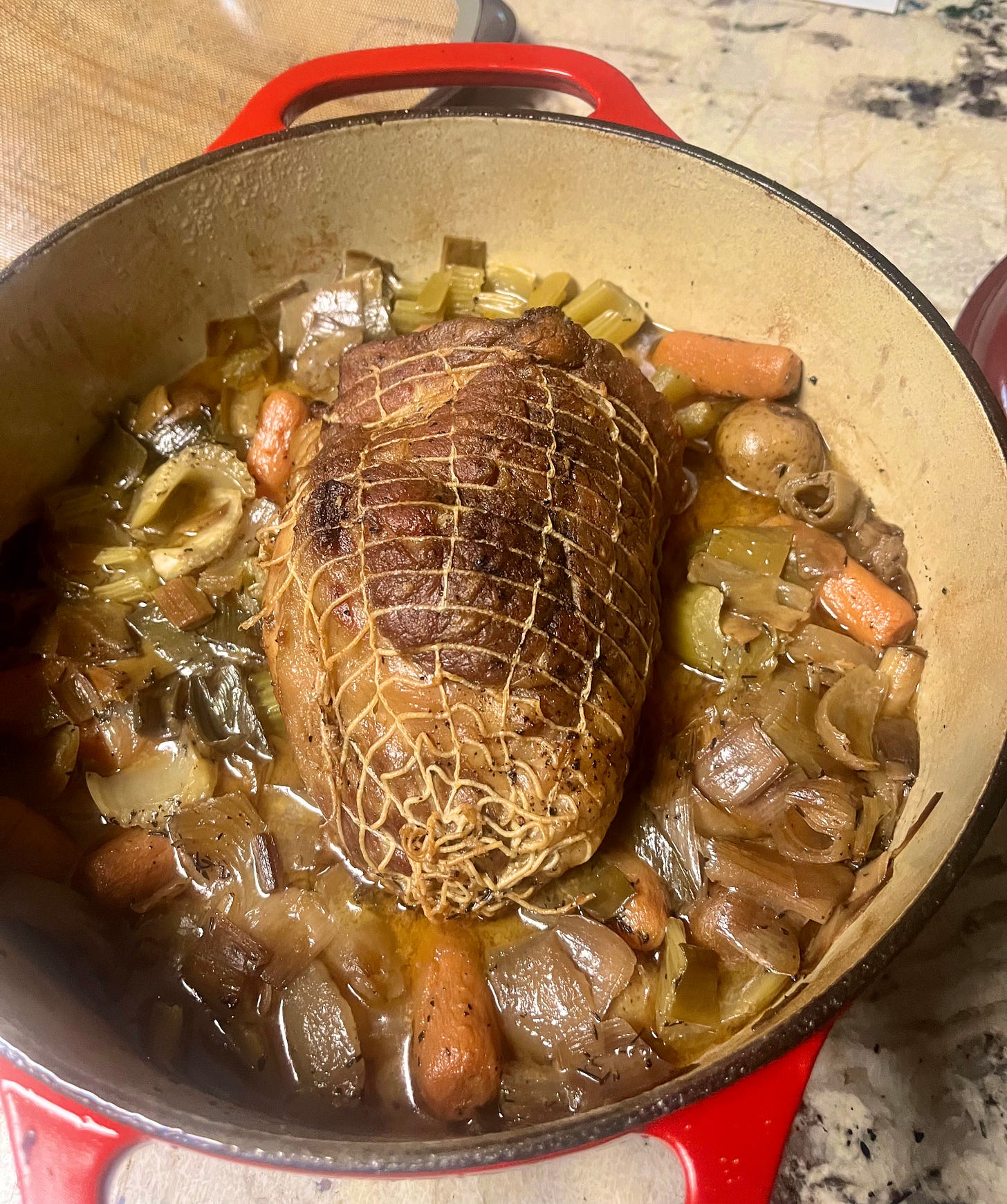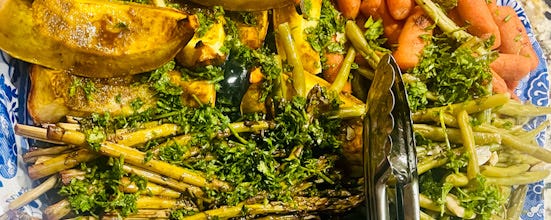Fried Food, Elvis, and Jesus
An introduction to me and to this newsletter about cooking in our American kitchens
Beloved food friends,
Welcome to my American kitchen! Let me introduce myself and what you can expect from me each week.

My favorite thing about America is something I used to experience daily when I lived in New York City. If I stood at a busy intersection — at the corner of “walk” and “don’t walk” — and I closed my eyes for a split second while I waited for the light to change, I could hear at least a dozen languages being spoken at once, full of opinions and arguments, pleas and jokes. I love that this country is filled with people from every corner of the world and that they come to this imperfect country to get away from persecution, from exploitation, and they settle down here to make a family, make a buck, and make a meal. While many bring magnificent food-ways with them that involve delicately nurtured traditions, eventually, these ancient methods get married to (or sneak off behind a building to make out with) other food traditions, and they even grab some “strange” from a fast food takeout window on the DL. Within a generation of a new immigrant group’s arrival, we have a new kind of American food, born of these interethnic interactions, and most of it is freaking delicious.
I learned to cook because my mother hated to and was frankly unintuitive in the kitchen. She would burn on the stovetop what she didn’t explode in the microwave. I used to cook every one of her frequent dinner parties from soup to nuts by the time I was ten years old. It was only at her funeral’s repast, which I prepared with my good friend Katie the morning before we buried her, that I learned that she had told everyone at those dinner parties that she had prepared all the food herself.
People standing around in black exclaimed, “My God! You cook just like your mother! She taught you well!”
I thanked them for the compliment. It was her funeral, and I wasn’t going to reveal her secrets from beyond the grave. I just took another bite of cake and made sure every guest had enough to drink.
I told him I loved fried food, Elvis and Jesus too much to stay in up North forever.
In high school, I worked for a French pastry shop as a clerk and a Swiss restaurant as a waitress, but I would watch the cooks in the back and learn by observing.
When I was twenty, in order to stay in Paris longer than my year abroad, I got a job translating at a French cooking school that catered to English-speaking professional chefs, as I had gleaned enough French food vocabulary to translate the vocabulary of the kitchen with ease. They paid me minimum wage, all the food I could carry home on the metro after a day of finding words in English to make the chef’s jokes less dirty in translation, and cooking lessons. I earned an intermediate certificate, which doesn’t make me a professional chef, but it does make me a pretty good home cook.
The thing is, despite all that wonderful haute cuisine, what I wanted to make for myself at home was more American than homard à l’amoricaine. While I cook at home, I reach into that crowd at the intersection of “walk” and “don’t walk.” I also reach into the American South, which is to say I reach into the hybridized cuisine created by Anglo settlers and African slaves. In New York, I found myself reading Southern novels and cookbooks in abundance. Eventually, I met a Southern man on my trip to see the Mississippi River for the first time, and after a year and a half of long-distance courtship, he got down on one knee on a higher bank of that most American river and asked me to marry him and move South for the rest of my days. I kissed him and said yes. That’s why I live, I work, I write, and I cook in New Orleans now.
My job is as a faculty member at a university, and when one of my students asked me why I would leave New York City to come down here, I told him that I loved fried food, Elvis and Jesus too much to stay up North forever. I am down here with a heart for the South and its diverse peoples.
While I am here in my apron, chopping onions, Here’s what I am up to: I am cooking like a New Yorker who grabbed many food traditions and held a party where a lot of them fused and had multilingual babies. And I cook like someone trained by old French chefs who told excellent dirty jokes to unwitting Americans who couldn’t understand them, but I could, so my food winks at them now.
Welcome to my American kitchen, like I said. It’s a glorious mosaic. It’s a melting pot. It’s my mother’s kitchen where I am the only cook. It’s the place where I go to clear my head in this crazy season of American life, closing my eyes as I listen to multinational conversations in culinary form and help you, beloved food friends, to make your house a home.
Eventually, I will likely put this newsletter behind a paywall, maybe for five bucks a month, but for the coming months, I am yours merely for the asking. Come on in. Grab a stool and a cutting board. I have an apron you can wear. Wash your hands. We are going to have a conversation with the people that came here from all over the world and made dinner.
Life outside can be hectic, scary., frustrating. I understand. But know this — You are not alone. Here I am, and here is dinner. Welcome.
Here’s what you can get in this newsletter in following issues:
Weekly grocery lists suggested to you by what I have made for my own household.
A way to take a dish you make one day and repurpose it in a new culinary creation the next day, so that leftovers don’t feel, well, leftover.
Some recipes and cooking instructions.
My oddball sense of humor.





I am so happy to have taken the leap from E.Jean where I took keen interest in your notes and the nature you present. Now, I peek in and find that you're a fellow 'foodie' And cultural student as I have always been. Though not anywhere near as accomplished as you seem, I'm ever a student and greatly enjoy what I'm learning about you. Do you happen to own or run a restaurant, or one that you frequent ? Though it's on my bucket list, I've not yet been to New Orleans. Also, I have a best friend that frequents through New Orleans as he has a brother living there. He's due to pass through soon with his wife and daughter. Brava Anne !
I love it! This is really enjoyable.